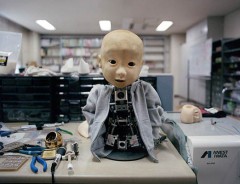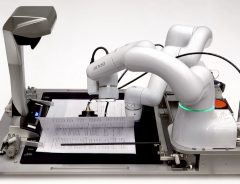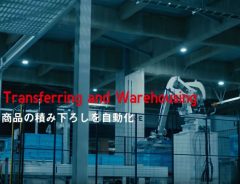Related Article
-

Star Wars R2-D2 Delivers Its Frigid Beer To Your Home Next Month
-

Tokyo Metro tests its first unmanned security and cleaning robot at Tsukishima Station
-

The Lifelike Advancements Of The Japanese Robotics Industry In A Revealing Photo Series
-

Japanese Robotics Solution Stamps Hanko And Signs Contracts, Baffles Twitter Users
-

Uniqlo’s 1st Automated Warehouse Replaces 90% Of Workforce With Robots
-

Sony’s Upgraded Pet Robot Dog Aibo Will Steal Your Heart [Video]



Robots have their nay-Sayers. Just listen to tech-entrepreneurs like Elon Musk or Andrew Yang and you’ll likely have trouble sleeping at night. According to them, automation is decimating economies, displacing workers, and showing no signs of letting up. No mere mortal can compete.
A far cry from this I-robot-esque doomsaying is Pepper, a friendly and sociable robot. To see for yourself, just go to a SoftBank store where it often works. You’ll be relieved, if not entertained. It’s cute, endearing, and vacuous eyes bare little resemblance to the T-800.
Pepper robot was launched by SoftBank in 2015. Market demand met the hype, and the first batch of 1000 robots sold out in about a minute. This opening success was well-deserved; Pepper’s creators endowed it with several capabilities making it retail savvy. The humanoid is equipped with a touchscreen, helping it to communicate with customers. Even more impressive, however, the unit’s AI technology allows it to ‘think’ and read social cues. Overtime, Pepper becomes increasingly astute at analyzing behavior. Its adaptive processing improves communication and services through exposure. The device can also interface with other tech gizmos, say Fitbits and the like.
Pepper’s ambition in life, however, is not to be a domesticated bot like The Jetsons’ Rosie. The creators intended the humanoid project to be a companion, a social tool for improving people’s lives. And thanks to its flexible, programmable design, it’s accomplishing this in many walks of life.
GREETER
Pepper’s most obvious role is that of a greeter. As such, the humanoid is probably at its best. It can zip around a store on its mobile frame and listen in on customer conversations with its voice detection -- not creepy at all. SoftBank has implemented stores staffed almost entirely by the robot. The bot can also take orders, say, from coffee-starved visitors. The device has been employed as a receptionist in corporate lobbies or behind the counter of cafes.
GROUND STAFF
After a missed connection following an overbooked flight, most airline passengers aren’t eager to interact with another human. Songshan International Airport in Taipei and Prague Airport picked up on this and have employed Pepper robots as ground staff. Passengers can have a friendly chat while acquiring information about their departure or be entertained by a robot dance. Pepper is also happy to point out directions to your terminal or pose for a selfie.
CONCIERGE AND RYOKAN STAFF
Checking in? Let a robot handle that. Concierge services are also in this machine’s repertoire. Although the look of an all robot hotel can be unsettling, a single automated staff member is manageable. Pepper’s lifelike presence and emotional intelligence reportedly inspire empathy from customers, as they feel a sense of empathy from the robot. Not too bad for a “warm-welcome.”
PRIEST
Youtube Embeddable:
Here’s where it starts to get interesting. If you’ve read about rural-flight on grape Japan, you know temples are closing throughout the country. This phenomenon, a result of demographic shifts, is straining the undertaking industry. There aren’t enough monks to meet the demand.
Pepper priest has been programmed with the adequate sutras and ceremony to help. While there is a lot of innovation happening in the undertaking industry, it will be interesting to see if this catches on. There is something eerily nihilistic as well futuristically awesome about a robot priest performing last rites. Manga fodder for sure.
RECREATION PROGRAM LEADER
If current trends continue, robotics are poised to play a major role in elderly care. Since Pepper is empathetic and agile, it’s an easy early contender. As mentioned, the automaton’s design allows for free movement and gesticulation. Xing company has harnessed this agility in a rehabilitation program for the elderly. Launch the app, and Pepper leads a rajio-taiso like physical rehabilitation class that is supported by video and music.
There are real therapeutic effects, too. A 40-minute exercise program for limited-mobility patients increases their prognosis. Communication between patients and nurses improves, patients become engaged in their psychical rehab regimens, and they all-around have a good time. The onset of schizophrenia may also be delayed.
PANDA
You may be thinking to yourself, why should this lovable android be confined to the human realm? To the amusement of passengers and foreign visitors, Ueno and Ginza station revealed Panda versions of Pepper – errh, pandanoids?
With protruding black ears and puppy-eyes, it could be mistaken for a robo-dog at first glance. The robot can give assistance and directions to commuters in numerous languages. It’s a bit of a stretch to call this incarnation “progress,” but we have the technology, so F-it, why not?
SANTA CLAUS
Fortunately, as the holiday season approaches, Pepper can also stand in as an impromptu robot Santa. While the prospect of an AI powered naughty and nice list is purely dystopian, the optics of a Pepper Christmas are anything but. As long as there is Christmas cake, and maybe some eggnog too, it should be a holly, jolly time.
So, is the singularity near? There may still be some time to go. The Pepper roll-out, after all, has not been without a few hitches. Pepper was recently fired from a Scottish grocery store, and critics are quick to identify the limited usefulness of the device. The humanoid has even inspired violence: in the early days, an enraged, and drunk, customer attacked a unit in a SoftBank shop. Perhaps we slow-witted humans needn’t worry just yet. Nevertheless, robots will continue to dominate the landscape of our industries. Fortunately, many are preprogrammed to obey Asimov’s Laws of Robotics. Which clearly always work...